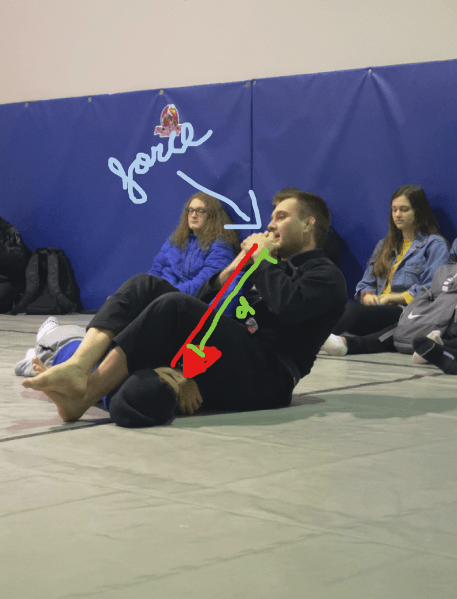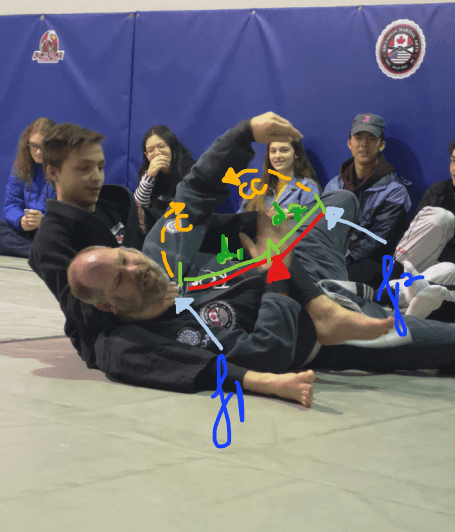Brazilian Jiu-Jitsu is a martial art focused on controlling one’s opponents using techniques to force him or her to submit. These techniques are taught and learned through experience as well as physics. Physics allows Brazilian Jiu-Jitsu to be useful to those who are deemed “weaker” or “smaller” and unlikely to win, due to the understanding of concepts such as, force, levers, and torque. Furthermore, Brazilian Jiu-Jitsu demonstrates these concepts regularly and understanding the physics behind the art, allows anyone, no matter age, size or gender, to submit their opponent.
Why does Jiu-Jitsu follow this progression?
- Get your opponent to the ground
- Get past your opponent’s legs
- Control their hips and shoulders
- Add a submission
Jiu-Jitsu follows the progression above because it allows the fighter to defend themselves from their opponent’s strikes, which are more difficult to take from the ground. This also puts the fighter in a position of power, above their opponent, to control the situation and direct the fight. Controlling the opponent’s hips and shoulders comes after the legs as those are closer to their body and will be used as lever points or as the opponents center of gravity making it difficult to move them or fight against them. Finally, once all strikes and the opponent has been neutralized, then comes the submission, using holds, locks, and chokes to ensure that the match is won.
Why does Brazilian Jiu-Jitsu want control?
When a fighter has control over their opponent, they can effectively use their opponent’s center of mass, arms, and legs, in order to submit them and win the match. Having control over the opponent’s entire body allows the fighter to choose how to submit their opponent using chokes, holds, and locks.
Joint Lock Diagrams
ARMBAR – The pivot point or folcrum is found at the opponent’s shoulder and is made with the fighter’s hip/legs. The fighter applied force towards him/her self on the opponent’s hand which then applies pressure on the opponent’s elbow. The opponent is physically unable to bend their elbow with great flexibility in the opposite direction it is supposed to bend, therefore they tap out in pain. Torque = F*d
KIMURA – The folcrum is located at the opponents elbow, and his/her forearm/elbow is stabilized by the fighters forearm/elbow. The fighter then pulls the opponent’s forearm with his/her hand, applying force and putting pressure on the opponent’s elbow causing them pain as they are unable to bend their elbow in such a manner. Once again, this causes the opponent to submit. Torque = F*d
Anatomy of a Choke
BOW AND ARROW – The pivot/folcrum is located at the opponent’s hip, which is stabilized by the leg/foot of the fighter. Force 1 applies a clockwise rotation, whereas, Force 2 applies a counterclockwise rotation. The rotation causes a choke and a submission. Torque = (F1*d1) + (F2*d2) [This is assuming that forces applied are perpendicular.]


